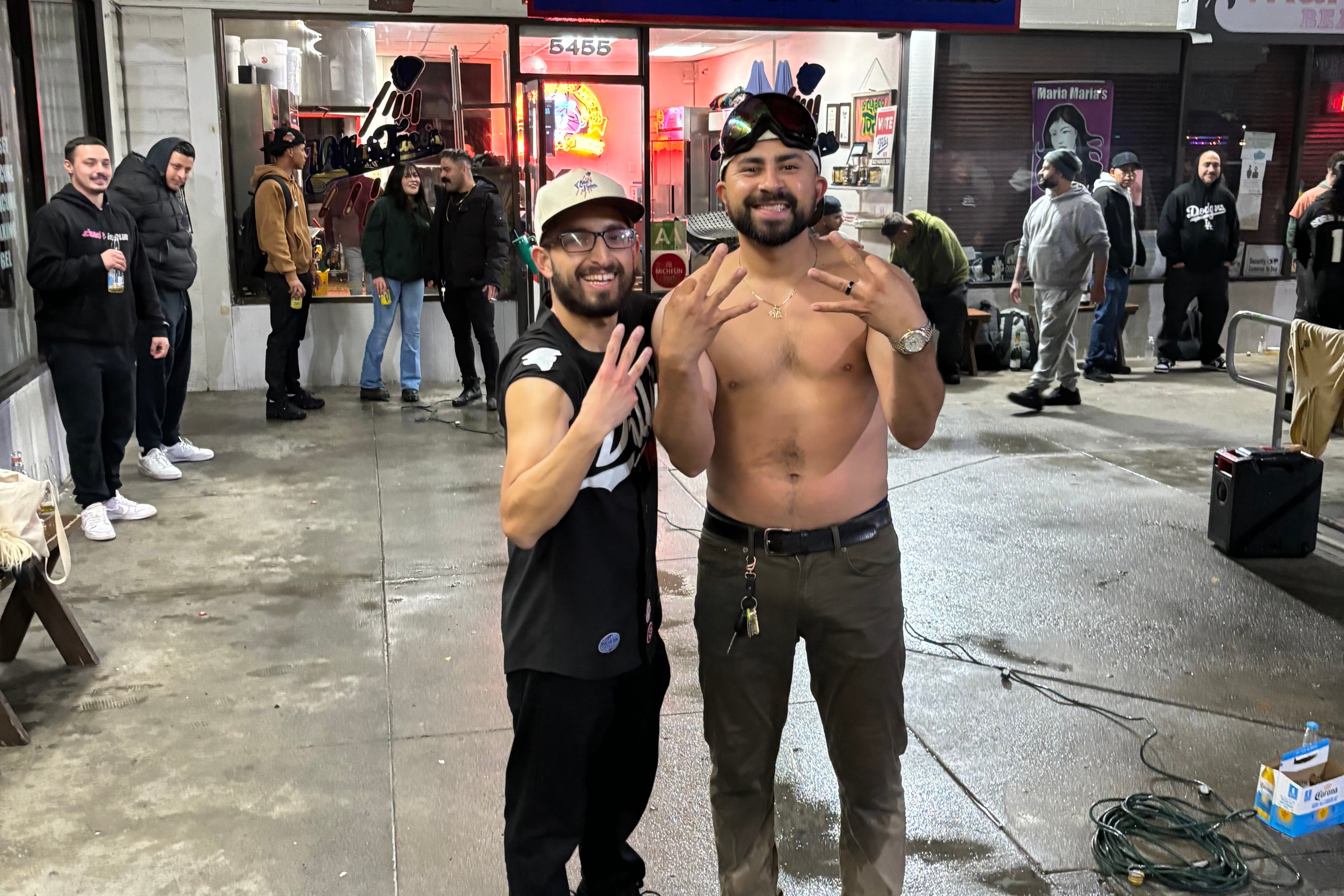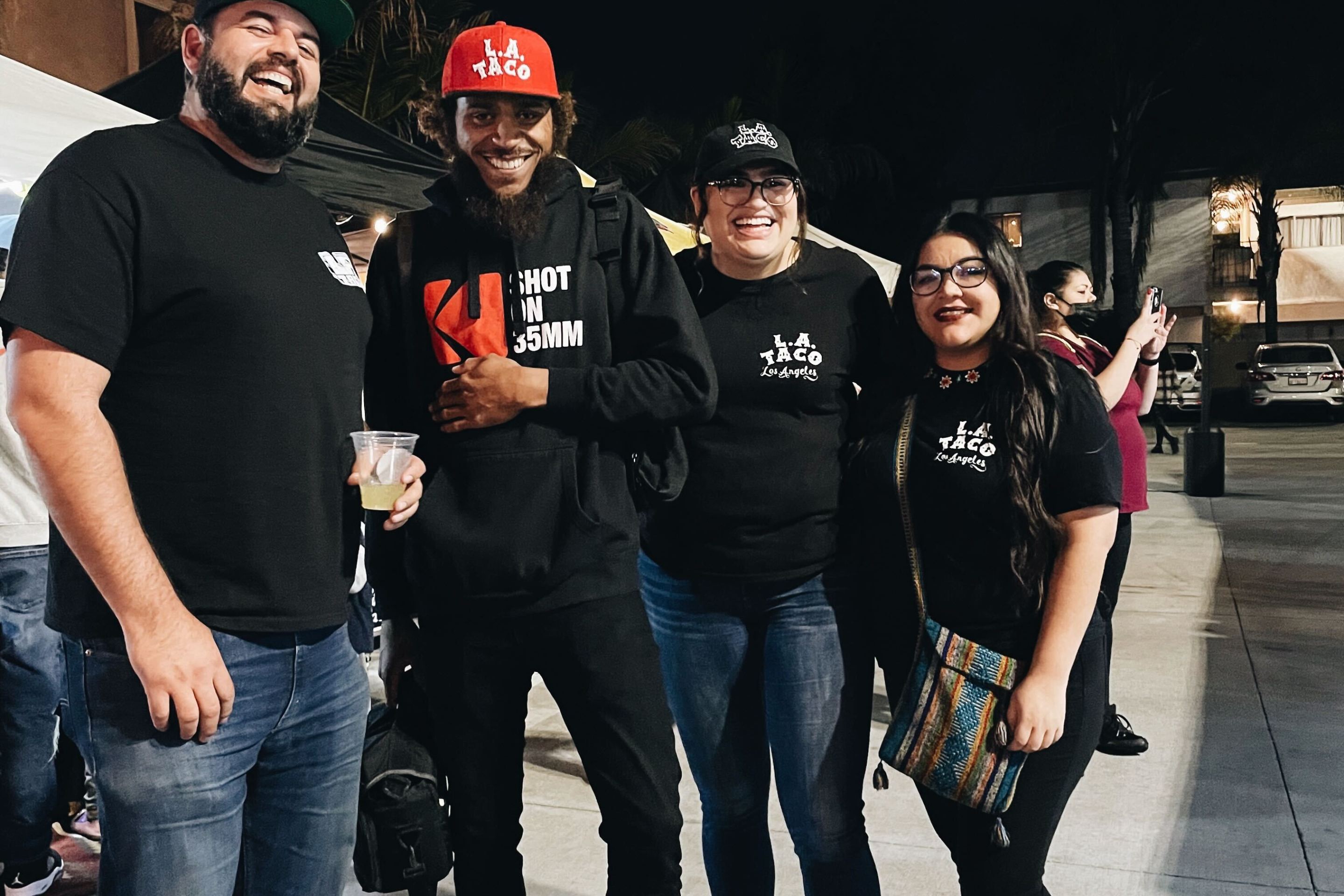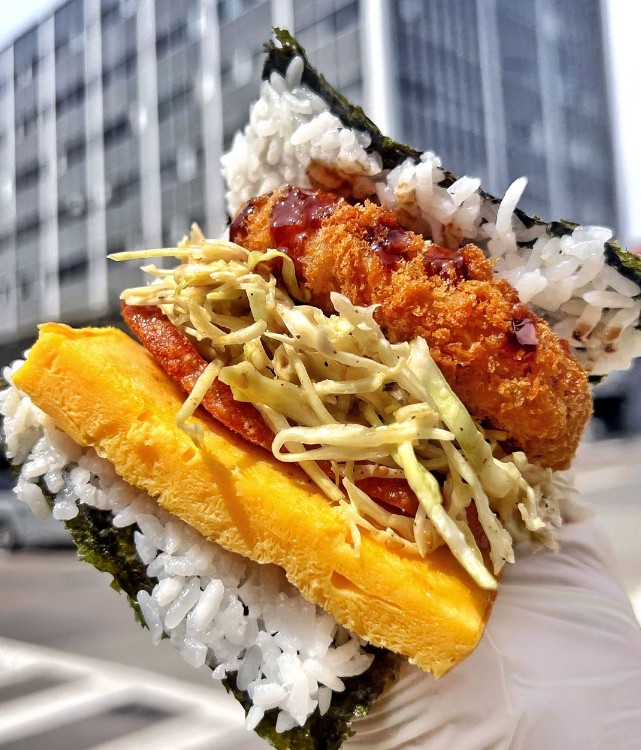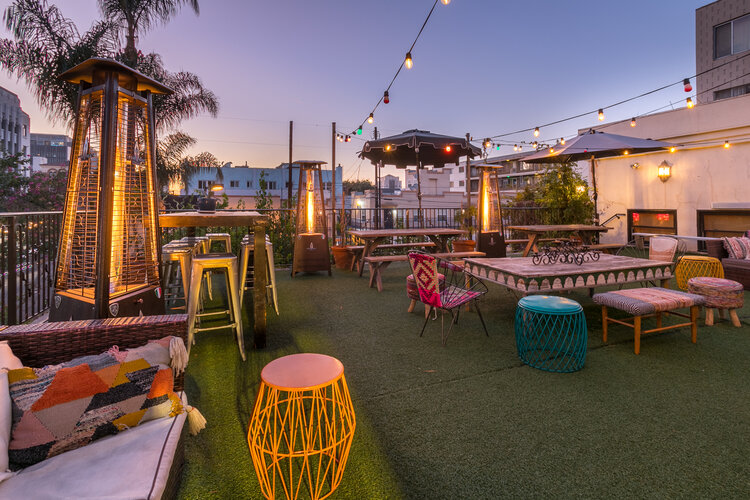The Chinese Delivery Apps and Heroic FB Group That Are Keeping the SGV’s Mom and Pop Restaurants Alive
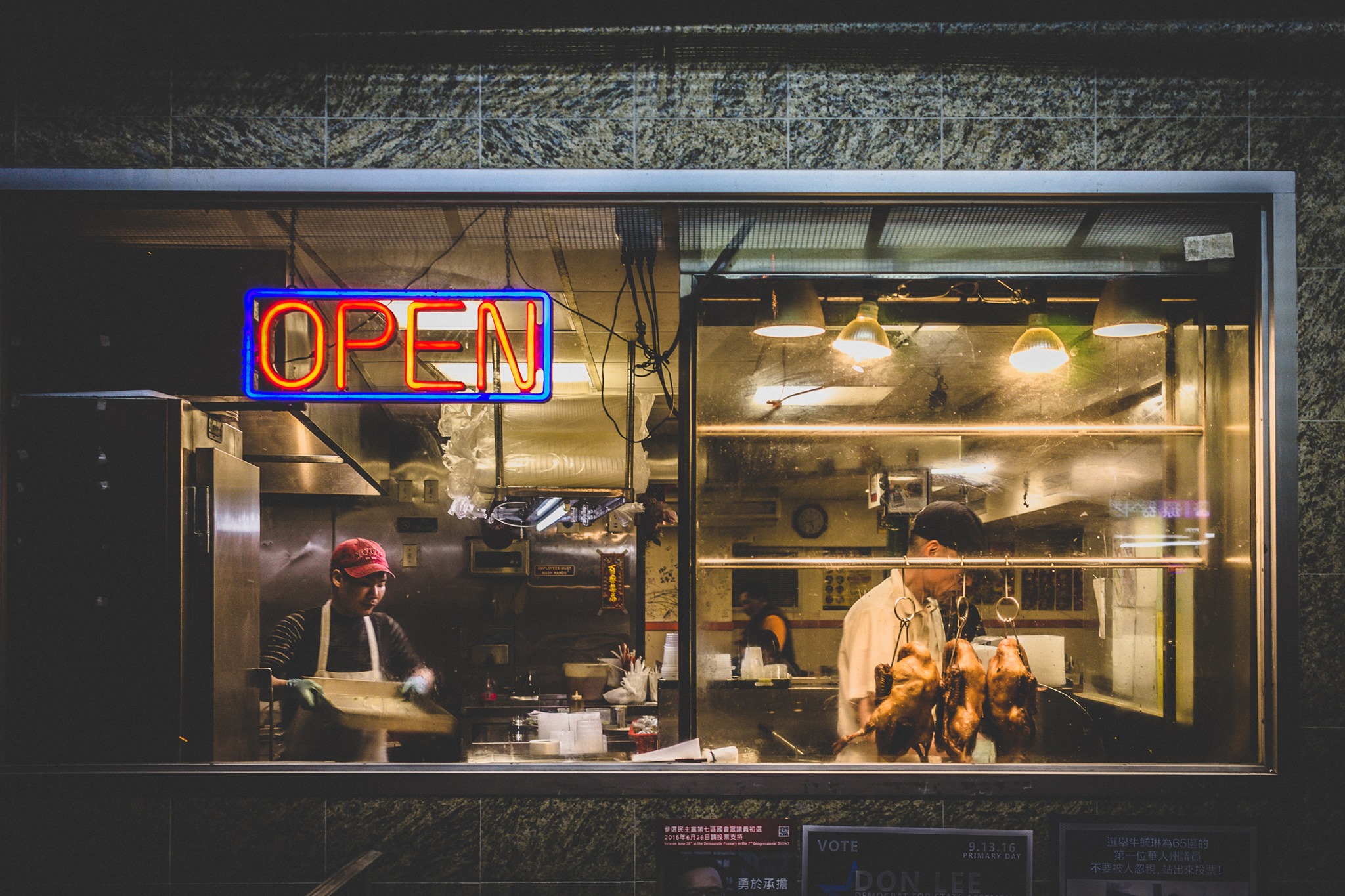
[dropcap size=big]T[/dropcap]he San Gabriel Valley (or simply SGV) is oftentimes best known for its abundance of Asian cuisine. Soup dumplings, Taiwanese hot pot, Sichuan lamb skewers, and fresh milk tea dot the rich culinary landscape of one of the largest Asian American communities in the U.S. So, when the pandemic hit, many worried how the prospering foodie culture would weather an indefinite period where indoor dining is no longer viable.
For restaurateurs everywhere, the new means of survival meant capitalizing on delivery, takeout, and, if space and resources allow, alfresco dining. Some have begun limited dine-in services as well. But the SGV community has also found alternative solutions—in social media, namely a rapidly growing Facebook group by the name “SGV Eats,” and proliferation of Chinese food delivery services that have swooped in in the name of saving authentic Chinese cuisine.
San Gabriel Valley Foodies Rally Together on Facebook
SGV Eats, created by two real-estate entrepreneurs and SGV natives, Brian Ngoy and Alan An, serves as a virtual gathering space for restaurant owners and foodies. (The group was first highlighted in the LAist). When Ngoy and An saw some of their favorite eateries hit hard by the pandemic, they knew they had to step in.
“A lot of these restaurants, they’re mom and pop shops, they’re not big on social media and don’t have a way to get their voice out,” Ngoy said. Together, they’ve worked to include more of these smaller places.
News of the group spread by word-of-mouth and, in less than two weeks, SGV Eats garnered thousands of members. Now, after nearly six months, they’re at a whopping 25K (and growing). The discussion page is filled with food recommendations and restaurant promotions, replete with mouth-watering photos of tofu flower cheesecake, dan dan noodles, omurice and so much more. It’s now one of the premier resources for SGV residents looking for new and exciting foods (and supporting old favorites) in the time of COVID-19.
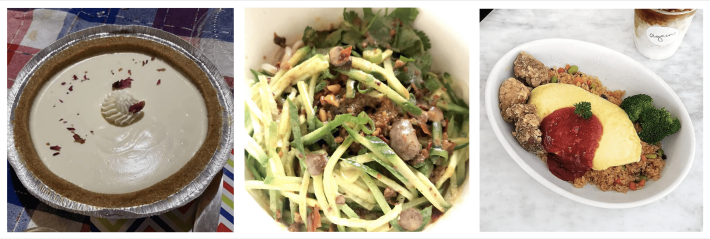
But An and Ngoy didn’t just stop there. Seeing a similar need in other communities, they created the groups DTLA Eats, Orange County Eats, San Fernando Valley Eats, South Bay Eats, and Westside Eats. Though, none have quite taken off like SGV Eats.
San Gabriel Donuts, a long-time fixture in the SGV, found a saving grace in the community. When the family-run donut shop reopened their doors in May, the slump in business was palpable. But Ngoy and An, who’ve been customers of the shop since childhood, encouraged the owners to promote their business on the platform.
“That really tells you what the community of SGV is. We are a really strong community, and we are also a foodie community.”
Stephanie Chea, the owners’ daughter, says that after posting in the group, about a third of their customers were finding them through their Facebook promotion. The posting received a wealth of “loves” and “likes” along with nostalgia-filled comments for the decades-old neighborhood mom and pop.
“I grew up going there with my dad and seeing your parents,” wrote one user. Others promised to stop by.
“I know for a fact that without the Facebook group, the business would be much much slower,” said Chea, “so I really appreciate everyone in that group and I’m grateful about it existing.”
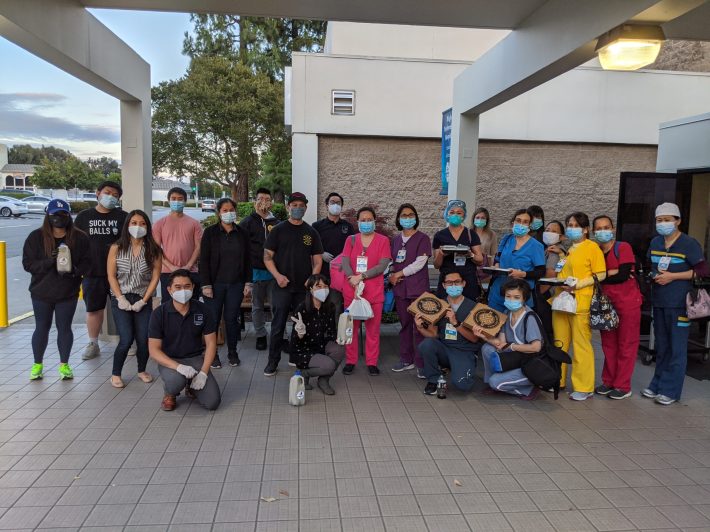
To further encourage group members to patronize local restaurants, the SGV Eats team sometimes hosts fundraisers and promotions of their own. The Great SGV Take-Out Weekend mobilized residents to purchase over the Mother’s Day weekend and helped raise money for hot meal delivery to frontline workers at the Garfield Medical Center and San Gabriel Hospital. Participating restaurants in the event donated 10 percent of their proceeds to the fundraiser, while An and Ngoy matched a dollar to every order as well. Over 200 meals, along with PPE, were delivered.
When the group hit a landmark 20k members, An and Ngoy organized another event—this time, a 15-day giveaway, partnering with local restaurants such as Rosemead-based Rose City Pizza, Temple City’s Summer Rolls, and Chim Thai Street Food in Pasadena. Users entered the giveaway by “liking” the restaurant’s Facebook page and PGI Estates (the pair’s real estate firm) for a chance to win a delicious meal, dessert, or drink.
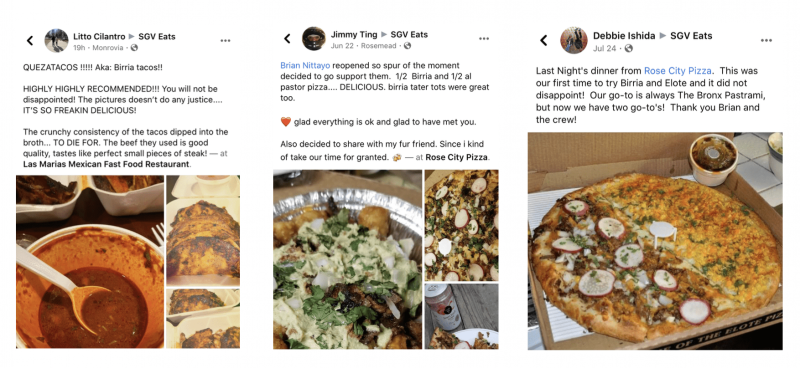 When scrolling through SGV Eats, a spirit of camaraderie sparked by a mutual love for the community’s food culture is evident. And, the support isn’t reserved solely for Asian cuisine either. There are plenty of Mexican restaurants in the SGV and a necessary effort to highlight them as well. Member Joy De Castro pays tribute to two old-school favorites, Pepe’s and Manny’s El Loco. There’s also a clear love for birria in its many forms, including tacos, burritos, pizza, tater tots and even ramen. One post, spotlighting a local Elotero, received an astonishing 1k “likes” and reactions, with tips on where to support the street vendor.
When scrolling through SGV Eats, a spirit of camaraderie sparked by a mutual love for the community’s food culture is evident. And, the support isn’t reserved solely for Asian cuisine either. There are plenty of Mexican restaurants in the SGV and a necessary effort to highlight them as well. Member Joy De Castro pays tribute to two old-school favorites, Pepe’s and Manny’s El Loco. There’s also a clear love for birria in its many forms, including tacos, burritos, pizza, tater tots and even ramen. One post, spotlighting a local Elotero, received an astonishing 1k “likes” and reactions, with tips on where to support the street vendor.
Months ago, when it was less certain which restaurants were still open, member Charlie Chan created a Google map of all the open establishments in the SGV region, which covers over 27 cities and unincorporated areas of Northeast Los Angeles County. A bulk of the businesses are concentrated in Monterey Park, Alhambra, Rosemead, San Gabriel, and Pasadena. The map is a visual representation of a database of open restaurants.
These local restaurants are what make up the fabric and identity of the place.
Some members of the group have even gone out of their way to provide free deliveries for their favorite food joints. Considering how commission fees charged by third-party services like GrubHub, Uber Eats and DoorDash can eat into a restaurant’s income, this act of kindness goes a long way, especially for smaller businesses.
“That really tells you what the community of SGV is. We are a really strong community, and we are also a foodie community,” An said.
Kevin Mok, the self-starter behind the dessert shop Mr. Obanyaki in Monterey Park, is especially grateful. The shop-owner says he’s received $20-$30 tips from customers, seen people pay for strangers’ desserts, and, in one instance, witnessed someone “throw $5 into the tip jar and walk out” without ordering anything.
“I love the community because they are the reason why small business is surviving through these tough times,” Mok said. “It’s touching.”
Moved by the random acts of kindness, Mok decided to pay it forward with a drink promotion—free black sesame milk tea. In light of the California wildfires, Mr. Obanyaki also donated drinks and wheel cakes to local firefighters, inspiring Coffee Zone to do the same.
Though Mok says he’s barely getting by on 20 percent of his usual sales, giving back is a priority for him. “Growing up, I was taught by my mom to always remember those that supported me and helped me through struggling times,” he penned in a post to the group, “Mr. Obanyaki vows to always give back to the community.”
For An and Ngoy and, frankly, the whole SGV community, these local restaurants are what make up the fabric and identity of the place. Ever since An was in elementary school, he’s frequented the mom and pop, San Gabriel Donuts. “They’re always smiling, asking how you’re doing in school. It goes beyond what they’re serving. They have a connection,” An said.
“Growing up, I was taught by my mom to always remember those that supported me and helped me through struggling times.”
As for Ngoy, he knows he can always count on getting a delicious bowl of Teochew noodles in the area—one that reminds him of his grandparents cooking. “I love restaurants like Kim Ky and Kim Chuy,” he said.
With restaurants beginning to open for limited dine-in service, An and Ngoy hope that this group will continue to be a guide for the best SGV fare and drink even after the pandemic—one that is more intimate and collaborative than platforms like Yelp.
“Similar to other members that have shared within the group, I'm still finding new restaurants in certain pockets of SGV that I didn't know about,” said An, “and I was born and raised in the SGV too.”
In the meantime, they encourage people to continue supporting their beloved eateries through this new normal.
“We’ll get through this together,” said An, reflecting on the generosity people have shown so far. “They’ll continue to provide amazingly delicious food and we’ll be here to support them.”
Chinese Delivery Services are Flocking to the San Gabriel Valley
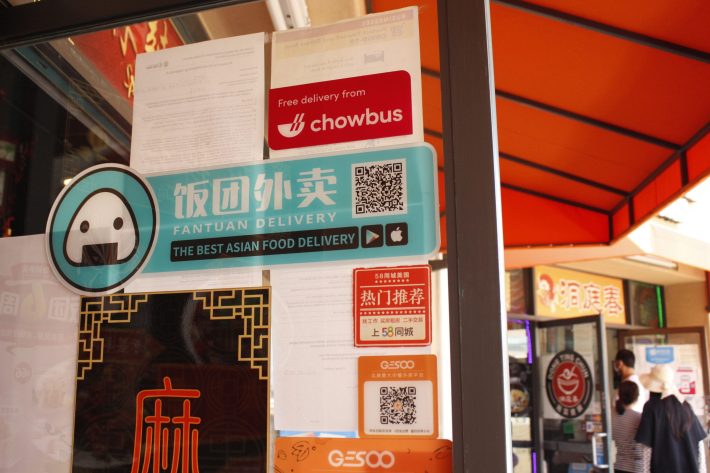
Xiaobo Wu, owner of the Muslim Chinese restaurant Mei Wei Jin Hai in Monterey Park, says, lately, he’s been inundated with the number of orders coming in. Despite a pandemic choking out several eateries in the SGV, business is booming for Wu.
“I’ve hired an extra person to help. I’m really overwhelmed, so tired,” Wu said through email.
He attributes the success mostly to a new food delivery platform Chowbus, which launched in L.A. April of this year. Chowbus isn’t the only delivery app to grace the local food scene mid-pandemic. Several food delivery apps targeted towards a Chinese-speaking demographic have slowly but surely taken over a slew of (mainly) Asian restaurants in Los Angeles.
Fantuan delivery stickers—a cutesy logo modeled after an Onigiri— started popping up in restaurant windows this past spring. HungryPanda, which actually jumped on the scene last December has recently gained traction in this delivery-dependent era as well. In August, Tejal Rao of The New York Times highlighted Runningman, a Korean delivery app based in L.A.’s Koreatown that is “attuned to local needs”—a gap left by major delivery services amplified especially during this time.
“They didn’t trust Chinese delivery platforms at all.”
What these culturally-specific delivery apps seem to accomplish is the ability to connect with their merchants on a much more personal level. Wu of Mei Wei Jin Hai says that he troubleshoots any problems he has with Chowbus’s L.A. manager, Arvin Sun, through WeChat.
“I remember calling Arvin at 1:30 in the morning and he helped me,” says Wu, “I didn’t want to be a bother, but they’re so attentive to us.”
Chowbus, Fantuan, and HungryPanda have well-established locations all over the world. None of them have their beginning roots in California. Chowbus is actually the only one that originated in the U.S. in Chicago in 2016. HungryPanda got its start in Chinese communities in the UK in 2016 as well. Fantuan Delivery, the oldest of the three, was created six years ago in Vancouver by two college students from China who recognized a booming market of hungry international students looking to eat conveniently.
However, few restaurants in the SGV had heard of them before their arrival (though Fantuan had more notoriety for operating in Orange County prior).
“They didn’t trust Chinese delivery platforms at all,” says Harry Zhou, the West Coast Regional Manager at HungryPanda. It took a couple of months of working closely with a few restaurants until owners realized they were a legitimate business. At times, representatives wandered from restaurant to restaurant, introducing their platform to owners. Their on-the-ground approach seems to have paid off. “Now they call me instead,” says Zhou.
Sun of Chowbus recounts a similar story. “Although we were already popular on the east coast, not many people on the west coast knew of our operation,” says Sun.
Chowbus first worked on securing relationships with a few big-name Chinese restaurants in the SGV, such as Sichuan Impression and Hibiscus Tree, before launching mid-April with 34 merchants on their platform. Now, they’ve partnered with about 400 restaurants in the Greater L.A. region—about 200 of them are in the SGV.
Fantuan, which expanded to L.A. in February, occupies an even larger share. They claim to have over 1,000 merchants in the Greater L.A. region, about 400 of which are in the SGV. In the roughly six months of the pandemic, Fantuan’s market size in the SGV grew 400 percent. The service partners with many non-Asian eateries as well, though a majority is Asian cuisine.
HungryPanda reported a 200 percent order growth since February and says their number of drivers has tripled.
Nick Liao who oversees Fantuan’s operations in Southern California says their main goal right now is to help restaurants get through the pandemic. “Without them, we have no business,” says Liao, “We are looking at the long-term partnership with these merchants.”
The pandemic is also the prime time for these services to expand their market through lowered fees and attractive discounts, luring in businesses and customers alike.
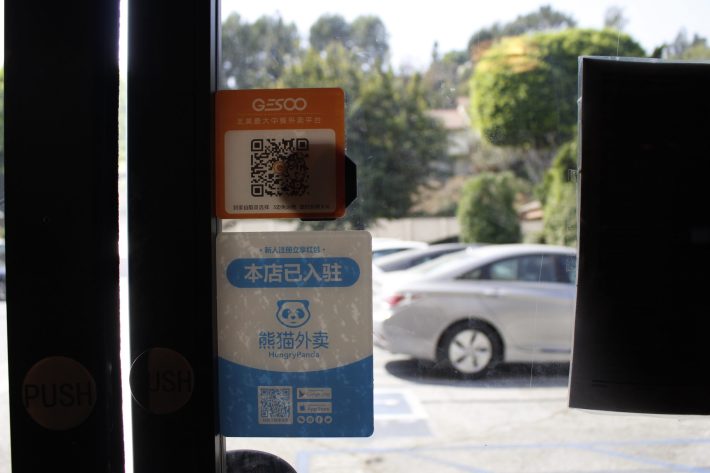
Yao Tsai who runs a Taiwanese cafe called Coffee Zone with his wife opted into using Chowbus and HungryPanda when he saw sales drop around 80 percent when stay-at-home orders were instituted. The cafe, which sits demurely in the corner of a plaza in Monterey Park, was a popular hangout spot for students looking for a place to study, play board games and sip on custom-made colorful latte art.
“We lost half of our old customers,” said Tsai, “Even if we allow people to sit on the patio, not a lot of people are willing to come out, so we pivoted towards a grab-and-go style.”
On the customer’s end, scrolling through any one of these apps can feel like strolling through a bargain flyer. A steady stream of 30-40 percent offs, $5 off a $20 order, $6 off a $30 order, and so on are reminiscent of discount-centered delivery app services in China.
Tsai says they’ve recovered to about 70 percent of their pre-pandemic business now. Coffee Zone is also on the likes of Uber Eats, Grubhub, and DoorDash, in addition to L.A.-based Chinese service GESOO. When it comes to the new delivery apps that have come into town, he has a middle-of-the-road outlook. He says sales went up when the cafe first got onto the new platforms, but orders started petering out after more merchants were added. In the end, each service has its pros and cons, he believes.
But he recognizes the new apps have a huge advantage in a community made up of Chinese-speaking small businesses. Like with Wu of Mei Wei Jin Hai, these companies are more likely to be aware of individual needs and are willing to negotiate terms like fees and additional marketing on an ad hoc basis.
On the customer’s end, scrolling through any one of these apps can feel like strolling through a bargain flyer. A steady stream of 30-40 percent offs, $5 off a $20 order, $6 off a $30 order, and so on are reminiscent of discount-centered delivery app services in China.
Arthur Wang, a resident of Monterey Park, says he hopped onto the Fantuan app after seeing their stickers pop up everywhere, including on cars. The discounts were tantalizing.
“Of course they mark it up, to begin with, to offset the commission,” he says, “but it's still a crazy deal.”
However, Wang also notes that on Fantuan at least, the delivery fee doesn’t show until you’re about to checkout, which can irritate users once they find out they need to pay an extra $10 or $20 for farther restaurants. But closer deliveries generally warrant a flat fee of $2.99 so the problem can be chalked up to bad user design rather than outright duplicity. Like with any delivery service app, additional fees can mark up the total price by a couple of dollars.
A majority of consumers on these apps are Chinese international students like Zhou. They’re generally younger, more attuned to trendy tech services than the older immigrant demographic, and don’t have a car.
Chowbus is, perhaps, the most innovative with their deals—the most effective is a bundle feature that lets customers combine orders from nearby restaurants, making it easier to reach the minimum order price and patronize several places at once. Customers can order a meal along with their favorite drink from a nearby boba shop, for example. Or, people from the same household can each fulfill their personal cravings without having to compromise.
First-time users also get a free Chowbus membership for one month ($9.99 afterward), which eliminates delivery fees for orders over $15—that includes deliveries from Arcadia to Irvine, which are nearly 50 miles apart.
Yixin Zhou, a recent graduate of USC, took advantage of the deal, frequently ordering food from the SGV to her L.A. apartment. She said she wasn’t surprised when an advertisement for Chowbus emerged on her Instagram feed one day.
“I feel like almost everything here has its Chinese version,” said Zhou.
A majority of consumers on these apps are Chinese international students like Zhou. They’re generally younger, more attuned to trendy tech services than the older immigrant demographic, and don’t have a car. And, although these apps have English versions (save for HungryPanda), they’re still hard to navigate for people who can’t read Chinese.
“We are trying to expand our customers into a more diverse base,” said Amy Zhao, a Chowbus Representative, “but because Chowbus was built on this niche of Chinese food, a lot of the customer base right now is Asian.”
“I think we’re already changing people’s habits, so even when the pandemic passes, they would’ve already gotten used to this type of service and this lifestyle.”
Fantuan also says they are trying to target a more local audience. Around June, they noticed a drop in international students once the school semester ended. With colleges adapting online instruction for an indefinite period of time, it’s uncertain when they’ll return.
“Our marketing strategy started to change a little bit because we know that we cannot focus on international students only,” said Liao.
When asked whether or not they’re worried business might slow down in the future when dining on-site becomes more of the norm, Liao didn’t seem too concerned. “I think we’re already changing people’s habits, so even when the pandemic passes, they would’ve already gotten used to this type of service and this lifestyle.”
These apps, essentially, are here to stay. And along with them, the restaurants that have made the San Gabriel Valley one of L.A.’s best eating destinations in the County.
Stay in touch
Sign up for our free newsletter
More from L.A. TACO
Announcing the TACO MADNESS 2024 Winner: Our First Ever Three-Time-Champion From Highland Park
Stay tuned for the new date of our TACO MADNESS festival, which was unfortunately postponed this last Saturday due to rain.
What To Eat This Weekend: Cannabis-Infused Boat Noodles, Thai Smashburgers, and “Grass & Ass”
Plus, a pizza festival and a respected chef from Toluca, Mexico comes to Pasadena to consult for a restaurant menu, including enchiladas divorciadas, and more.
Facing ‘Immediate Layoffs,’ L.A. TACO Launches Membership Drive to Save Our Publication
After Sunday, we do not have enough money to make another payroll. We need 5,000 members to become sustainable. Our deadline is April 26th to hit this goal.
This New Koreatown Onigiri Spot Is Unlike Any Other in Southern California
Supamu, which started as a food truck and a series of pop-ups, brands itself as Southern California’s first Okinawa-style onigiri. What sets its onigiri apart from competitors? All the details are in the post, plus where to find it.
When ‘Tomorrow’ Never Comes: The Saga of a DTLA Bar Staff’s Struggle To Get Paid
A barback recalled a time when he had to use a payday loan app to cover a dinner bill. “How can you, with a straight face, hand someone a check knowing that there isn’t money in the account,” the barback questioned.
